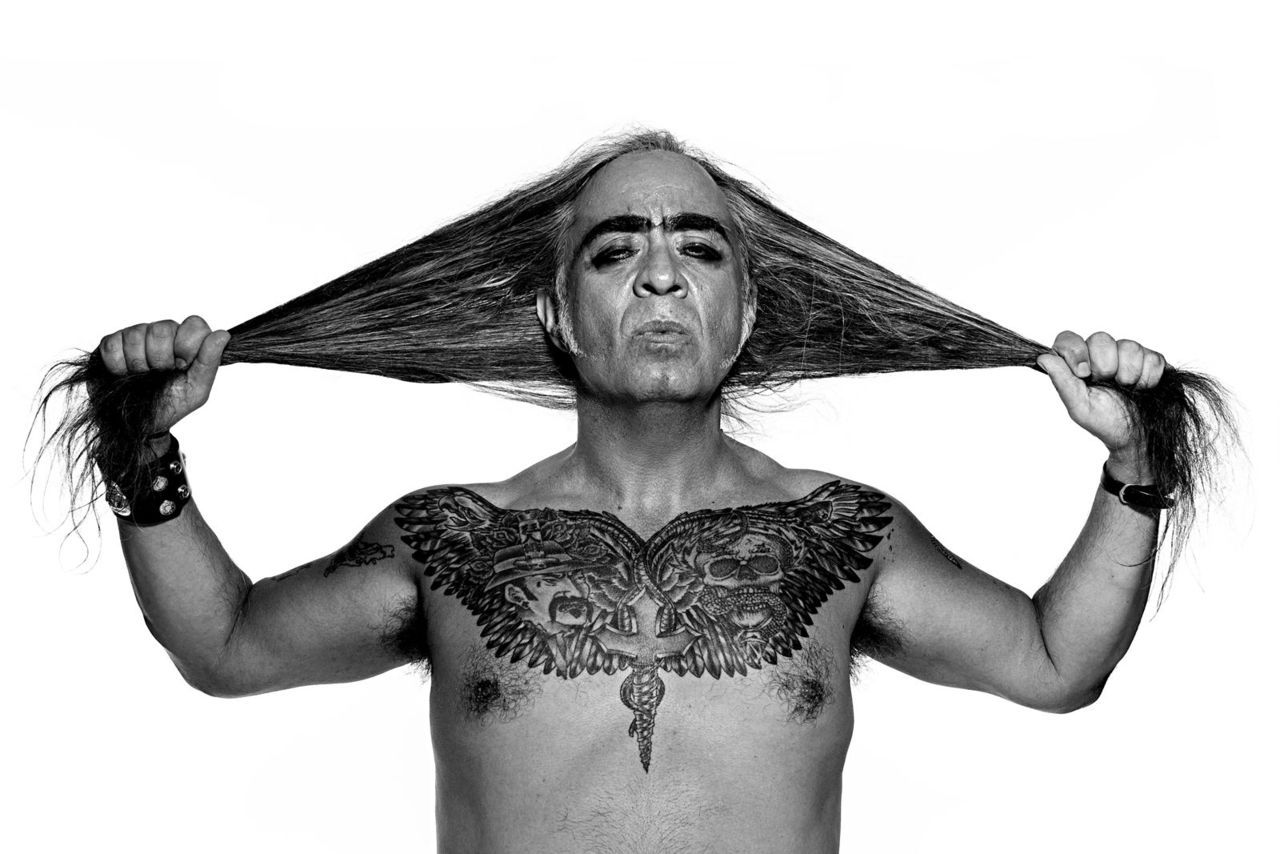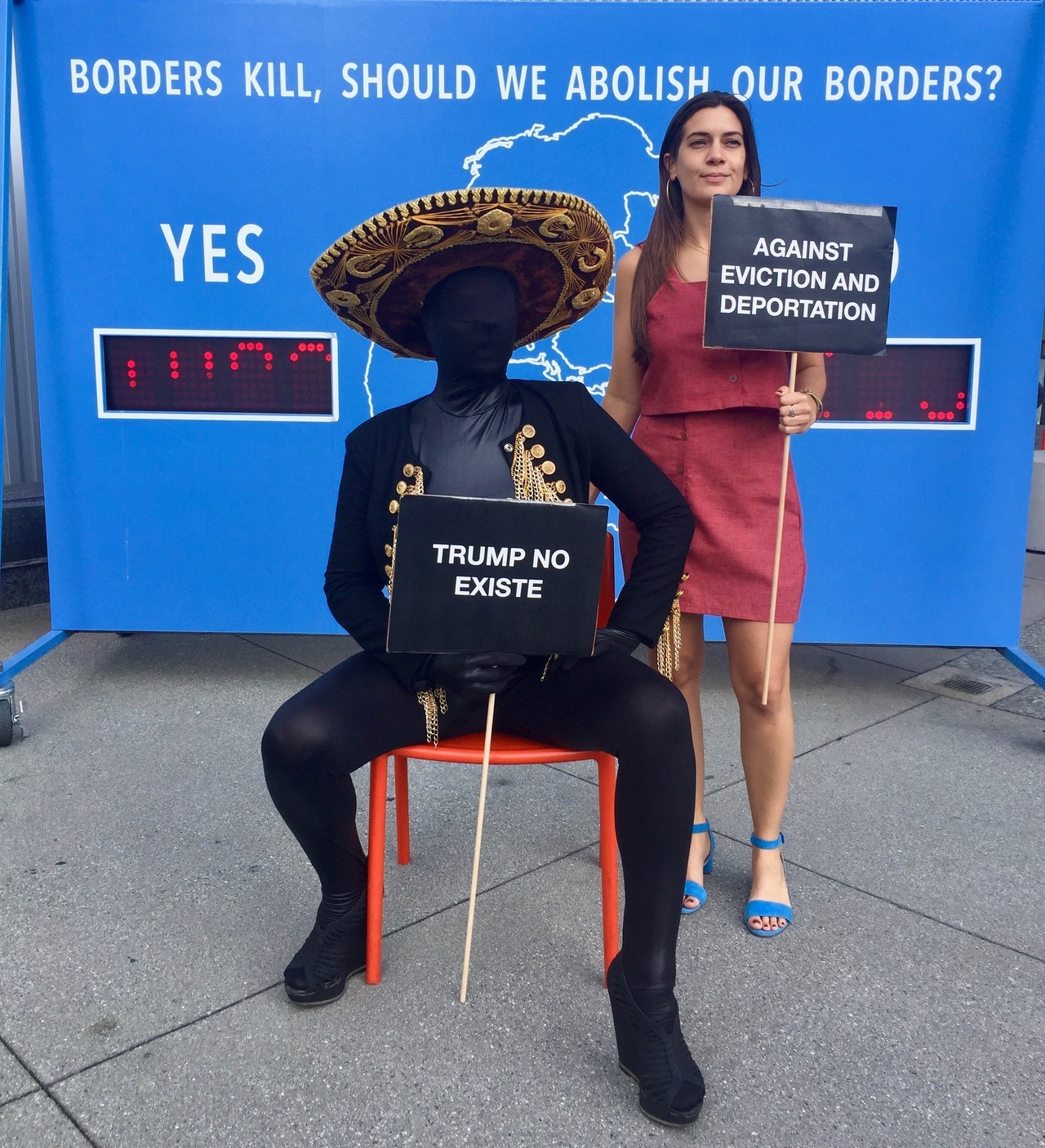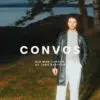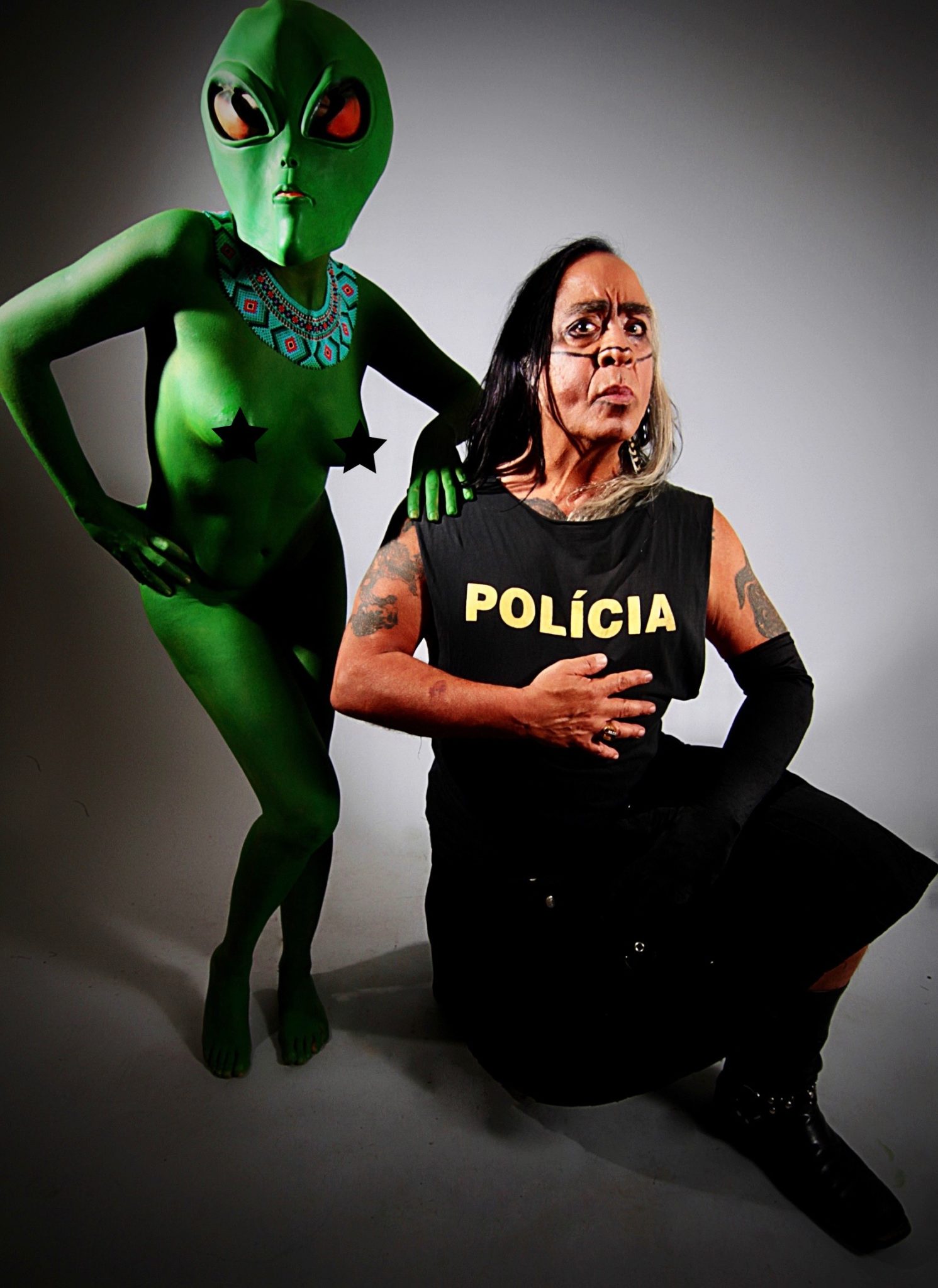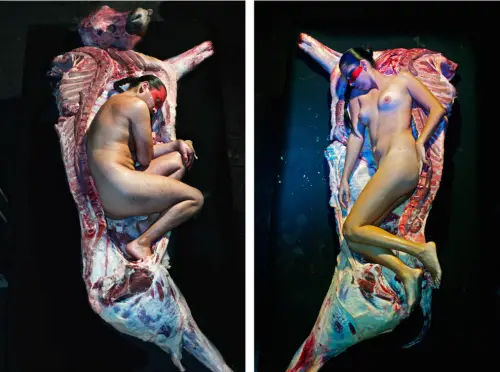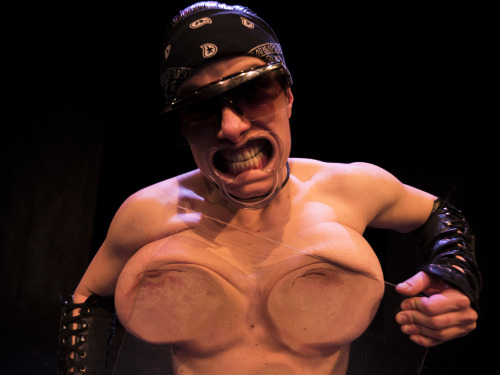“I wake up with a hangover, exercise, watch the news or a horror movie—they are both the same—and begin to work.”
According to Mexican performance artist Guillermo Gómez-Peña, artists have important work ahead of them.
“The Trumpocalypse has inaugurated a new era of ultra-nationalism, xenophobia, homophobia, censorship, witch hunts—artist communities are being forced to step up and talk back. It seems that our contemporary models of democracy are in crisis and broken. Pocha believes that helping others to cross borders with a sense of compassion and radical tenderness can potentially create a third space in which we can get to understand each other a little bit more, and look beyond a binary political model. We believe that this is an act of radical activism.”
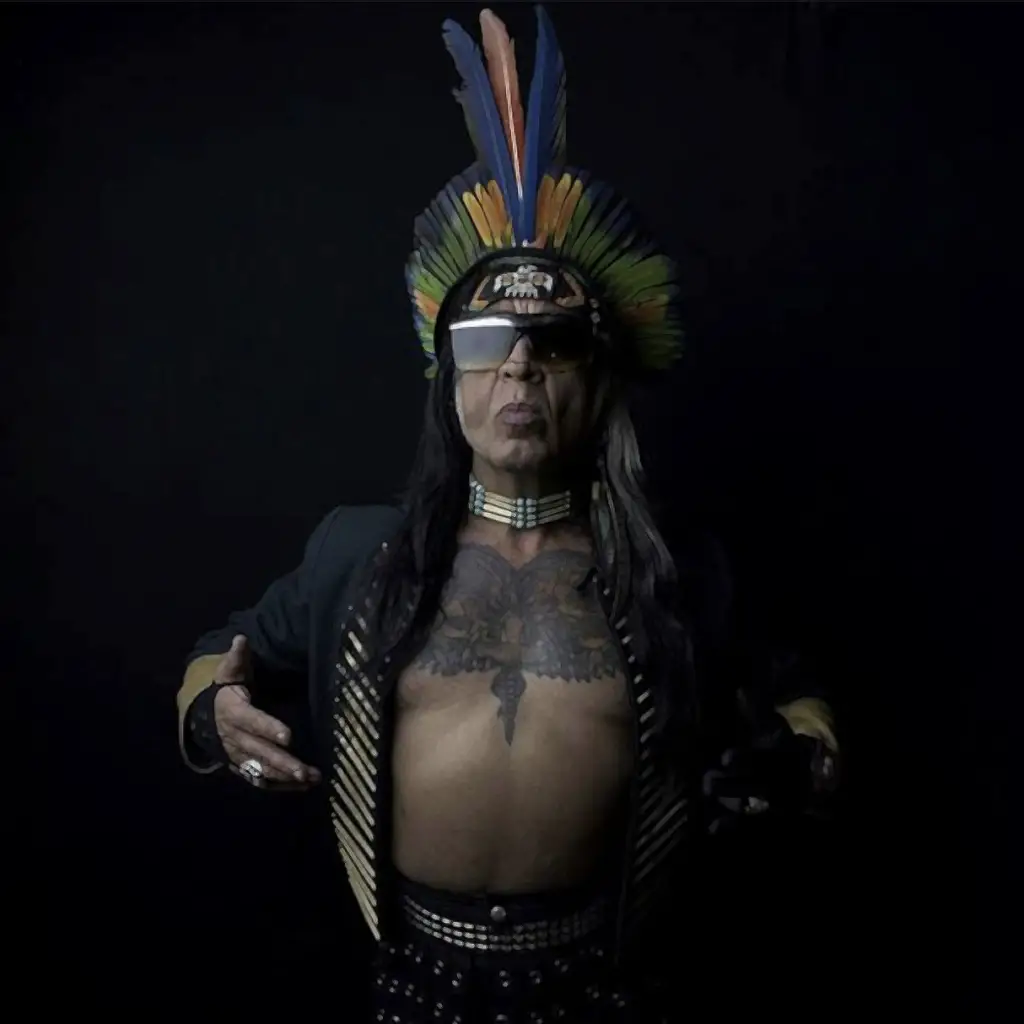
In this case, the “borders” he’s describing are mental rather than geographical. The “Pocha” he is referencing is La Pocha Nostra, a trans-disciplinary art troupe directed by Gómez-Peña that has been featured at some of the world’s most prominent art institutions, including the Tate in London, the Guggenheim in New York, LACMA in Los Angeles, and most recently at Mexico City’s Museum of Modern Art, where I first encountered Gómez-Peña’s unique—if not flat-out bizarre—work.
Making an Impression through Transgression
It comes out of nowhere. You’re walking through the museum—a Frida Kahlo here, a Diego Rivera there; stunning works left and right to be sure, but nothing all that unexpected—then you stumble upon something jarring, or at least out-of-place: a photograph of a man clad in half-drag, half-traditional western attire, assault rifle in hand, red high-heeled foot emerging from his skirt, an apple-bottomed woman with a mohawk perched on his knee.
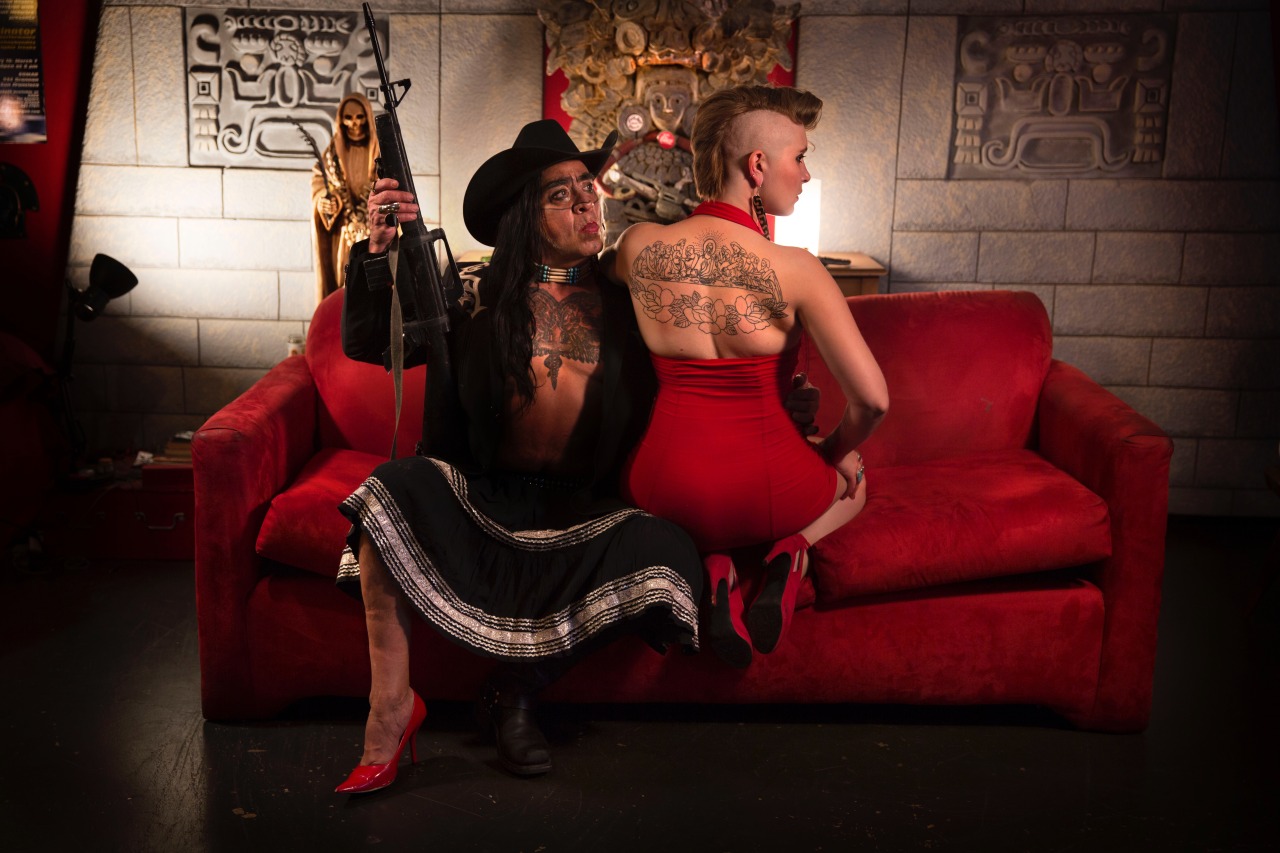
And that’s just the beginning.
A mostly nude man wearing a horse mask flies through the air suspended by rope as he kisses a bare-chested woman in a flowing red skirt. Naked bodies rest atop great slabs of meat. Women pose in a graffiti-covered alley wearing nothing but red heels and sex-toys. Everywhere you look you see bodies, S&M, guns, people in drag, religious iconography, coffins, toys (“War on Terror—the Board Game!”).
It’s a unique blend of an old recipe: sex and violence.

“I love to work with nude bodies. I feel that the nude body is a very powerful metaphor that refers directly to the social and the political body,” Gómez-Peña explains when I reached out to him later. “Performance artists understand this. We also understand that our body is the only territory we can really control, that signify the empowerment of the queer body or of the highly racialized black or brown body, or that denounce violence against women, or the environment. The performance artist thinks also of the human body as landscape, map, artifact, machine, cyborg, animal, mythological creature, text, and in this sense, the nude body is not really ‘nude.’ It’s rather a symbolic artifact or a conceptual space to engage in critical thinking. This can be scary for conservative people.”
The conservative influence of the Catholic church is strong throughout Mexico, so it was surprising to find transgressive work like that of Gómez-Peña given such a prominent platform in one of the country’s most prestigious art institutions, even if the modern art community tends to lean progressive.
“My hope is to shatter their sense of the familiar and raise their consciousness about the possibilities of freedom. What I think some people find shocking is the convergence of sex, politics, and religion.”
He has his own opinions about what is shocking and what is not.
“Shocking is organized crime—cartel violence. Shocking are the retrograde politics of Donald Trump. War is shocking. Violence at the U.S./Mexico border is shocking. Social injustice is extremely shocking to me. But working with the human body to generate complex images that articulate our multiple crises is not shocking at all.”
Trump, Hope, and the Role of the Artist
As much of his work deals with Mexican identity, immigration, and United States foreign policy, it should come as no surprise that Gómez-Peña holds strong opinions about the current U.S. administration.
“Like Yosemite Sam, his name sounds like a bad joke: Donald Trump. An ex-casino owner and reality TV actor is in power and everyday feels like a new episode of a twenty-four-hour, post-apocalyptic reality TV show titled ‘The President of Chaos.’
Trump is actually a performance artist impersonating a cartoon of the worst stereotypes that progressives have about the far-right: A boisterous, misogynous, racist, provincial cartoon of a 1950’s ‘ugly American.’ It’s a brilliant durational performance…but also a very scary one.
As a Mexican, I witness the daily deportation of migrants and activists. As artists, it’s life or death for us. Trump’s cabinet is determined to dismantle the structure and culture created by the Civil Rights Movement and to destroy the National Endowment for the Arts and Humanities, the Corporation for Public Broadcasting, and the Department of Education.
We are living in a state of emergency. We are forced, once more, to reinvent our artistic practice—to be bolder than ever before.”
Through all of this, he has hope.
“Since 9/11—as my meta-horizons began to fade—I became obsessed with hope, with finding its spiritual source and location. Is hope a deep feeling of expansion located on the chest, the abdomen or the sphincter? Is it a distant marker in the horizon that directs our actions, or a mysterious spiritual energy that propels you into the unknown against the laws of gravity? Is hope a matter of quantum theory? A form of poetic will? Is hope by definition illogical and unreasonable? Can hope be nurtured through art and education? Does hope put you at odds with the state?“
“I believe artists have a collective purpose. Our job is to talk back to power, to chronicle the dark corners of the human condition, to wrestle with our inner demons and with social and cultural demons, and take the temperature of democracy.”
So according to Gómez-Peña what can artists do?
“I can only speak for myself. As an artist and poet, it is my responsibility to keep imagination alive.”

